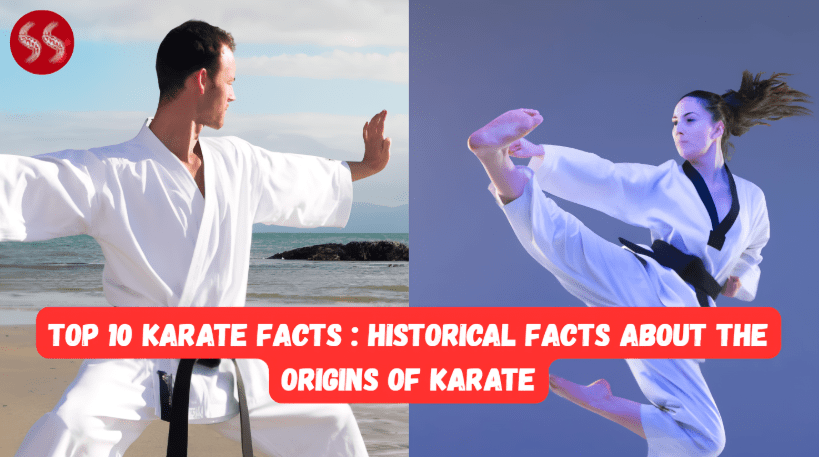Karate, the globally celebrated martial art of “empty hand,” has a history far richer and more complex than many realize. While modern-day practitioners know it for its powerful kicks, strikes, and discipline, its origins are a fascinating story of cultural fusion, political oppression, and individual genius. The art was born on the Ryukyu Islands, primarily Okinawa, and its development was a result of a unique blend of indigenous fighting methods and influences from Chinese martial arts.
This journey from a secretive and often misunderstood practice to a mainstream Olympic sport is a testament to the perseverance of its early masters. This guide is dedicated to uncovering the true story of how karate came to be, a journey that reveals some of the most compelling and little-known Top 10 Karate Facts.
The true story of karate is one of adaptation and resilience. It evolved in a society where weapons were often forbidden, forcing its practitioners to develop a formidable, unarmed fighting system. This historical context gave rise to a martial art that emphasized striking and blocking with the natural weapons of the body. Understanding this history is essential to appreciating the depth and meaning of the art itself.
Our list of the Top 10 Karate Facts will explore everything from the original name of the art to the key figures who standardized its forms and brought it to a global audience. This is the ultimate resource for anyone seeking to understand the historical roots that make modern karate so powerful. This comprehensive look at the world of karate is why this is the ultimate guide to the Top 10 Karate Facts.
Top 10 Karate Facts :
10. The Original Name of the Art was “Te”
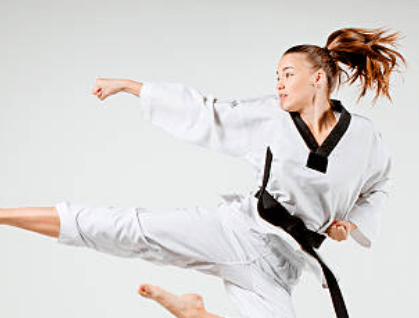
Before it was known as “Karate,” the indigenous fighting method of Okinawa was simply called “Te,” which translates to “hand.” This term referred to the various unarmed fighting systems that developed in different parts of the Ryukyu Islands. There was “Shuri-te,” from the royal capital of Shuri; “Naha-te,” from the bustling port city of Naha; and “Tomari-te,” from the village of Tomari. Each of these styles had its own unique characteristics and techniques, and their fusion would eventually give rise to modern karate. This is a foundational fact on our list of Top 10 Karate Facts.
The use of “Te” as a general term highlights the localized and often secretive nature of these early martial arts. There was no single, unified style; instead, families and villages passed down their own unique methods. The eventual synthesis of these different “Te” styles by key masters is what paved the way for the formalized art we know today. This early history is a key part of the story, and a vital entry among the Top 10 Karate Facts. The very name of the art is one of the most interesting of the Top 10 Karate Facts.
| Stat | The term “karate” was not widely used until the 20th century, with “Te” and other similar terms being the standard for hundreds of years prior. |
9. The Art Was Developed in Response to a Weapons Ban
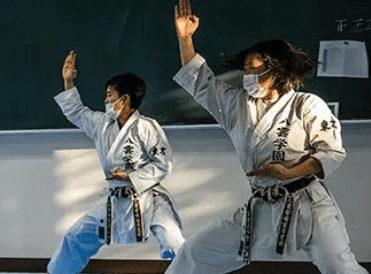
One of the most significant historical events that shaped the development of karate was the series of weapons bans imposed on the Okinawan people. The first ban was in the 15th century by King Sho Shin, and the second, more comprehensive ban, was in the 17th century after the Japanese Satsuma clan invaded and occupied the islands. With a ban on weapons, the Okinawan people were forced to develop an effective, unarmed fighting system for self-defense. This crucial historical context is one of the key factors that makes this a list of the most important of all the Top 10 Karate Facts.
The weapons ban forced the development of a fighting style that was efficient, powerful, and focused on using the body as a weapon. This is where the emphasis on striking, blocking, and parrying with hands, feet, and elbows came from. The Okinawans’ need for self-preservation in the face of an oppressive regime led to the creation of a sophisticated martial art. This powerful history is what makes this fact a crucial entry on our list of Top 10 Karate Facts. The historical necessity for self-defense is a defining element of the Top 10 Karate Facts.
| Stat | The Satsuma invasion in 1609 led to a complete ban on weapons, which is widely credited as a major catalyst for the evolution of Okinawan martial arts. |
8. Chinese Martial Arts Had a Profound Influence
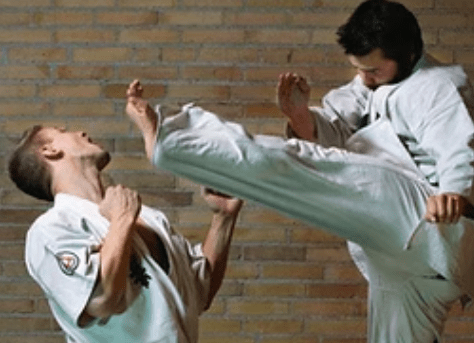
While “Te” was the indigenous fighting method of Okinawa, it was profoundly influenced by Chinese martial arts. Okinawa’s location as a trading hub between China and Japan meant that Chinese culture, including its martial arts, was regularly brought to the island. Okinawan masters would travel to China to study, and Chinese martial arts experts would visit Okinawa, leading to a direct exchange of knowledge. This cultural fusion is a foundational part of the art’s history and an important entry among the Top 10 Karate Facts.
The influence of Chinese martial arts is most visible in the forms, or kata, of many of the early karate styles. The circular movements, open-hand techniques, and emphasis on breathing and internal energy are all hallmarks of Chinese martial arts. This blending of indigenous Okinawan techniques with sophisticated Chinese methods created a unique and highly effective martial art. This is why it is one of the most important of the Top 10 Karate Facts. The Chinese influence is a crucial detail of the Top 10 Karate Facts.
| Stat | It is believed that the kata Sanchin, a foundational form in many karate styles, was brought to Okinawa by Kanryo Higaonna after his studies in China. |
7. The Original Name of the Art was Changed from “China Hand” to “Empty Hand”
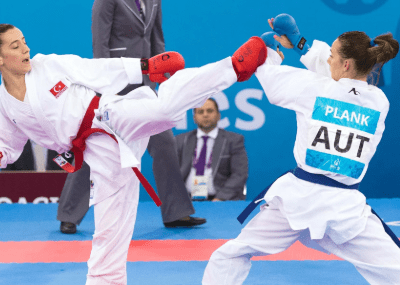
For centuries, the Japanese characters for karate were written as “Tōde,” which literally meant “China Hand.” The name was a tribute to the Chinese origins of the art and its techniques. However, in the early 20th century, a pivotal change was made. Gichin Funakoshi, the “Father of Modern Karate,” changed the characters to “Kara” (meaning “empty”) and “te” (meaning “hand”). This seemingly minor change had a profound impact on the art, which is why it is on our list of the Top 10 Karate Facts.
This change was not just about the name; it was a philosophical shift. By changing the name to “empty hand,” Funakoshi emphasized that the art was not just about fighting, but about self-improvement and developing a strong character. It symbolized the idea that a practitioner must be empty of ego, anger, and other negative emotions to truly master the art. This shift helped popularize karate in mainland Japan and solidified its place as a modern martial art. This philosophical change is one of the most important of the Top 10 Karate Facts.
| Stat | Gichin Funakoshi officially adopted the new name “Karate-Do” (The Way of the Empty Hand) in 1936, a change that was quickly accepted by all major styles. |
See More:
6. Karate was a Secretive Art for Centuries
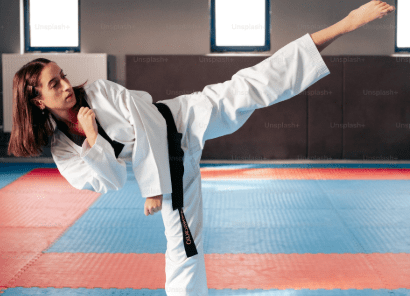
For centuries, karate was a secretive art, practiced in private and passed down from master to student in a clandestine manner. This was due to the political climate in Okinawa, where the practice of martial arts was often looked upon with suspicion by the ruling authorities. Masters would teach a select few students in secret, often in their own homes or in remote areas. This secretive nature of the art is a key part of its history and an important entry among the Top 10 Karate Facts.
The secrecy of karate training meant that the art was highly concentrated and specialized. Masters would often teach only one or two students at a time, ensuring that the techniques were passed down with the utmost precision and care. This secrecy also gave rise to the idea of the “karate master” as a mysterious and powerful figure, a myth that still persists today. The clandestine nature of its history is a defining aspect of the Top 10 Karate Facts.
| Stat | It was not until the early 20th century that karate began to be taught in public schools in Okinawa, a major turning point for the art. |
5. The Formal Introduction of Karate into Japanese Public Schools
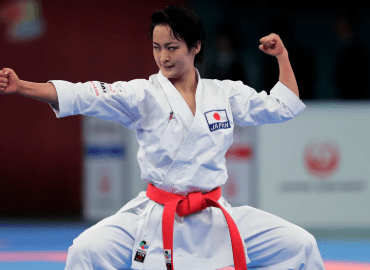
The introduction of karate into the Okinawan public school system was a pivotal moment in the art’s history. It was a move led by Anko Itosu, who believed that karate should be a part of a child’s education. He created a series of simplified forms, or kata, called “Pinan,” which were easy for children to learn and were designed to teach the basic principles of the art. This crucial move is a key reason why it is a significant entry on our list of Top 10 Karate Facts.
This public school initiative helped standardize the art and make it accessible to a wider audience. It also helped to legitimize karate as a form of physical education and a disciplined art. The success of this initiative paved the way for the art’s introduction to mainland Japan and its global expansion. The educational formalization is a key element of the Top 10 Karate Facts.
| Stat | Anko Itosu’s Pinan series of kata is now a foundational part of nearly every modern karate style, a testament to its effectiveness as a teaching tool. |
4. Gichin Funakoshi Introduced the Art to Mainland Japan

Gichin Funakoshi, a student of both Anko Itosu and Anko Asato, is credited with introducing karate to mainland Japan. In 1922, he was invited to Tokyo to give a public demonstration of his art, which was a huge success. Funakoshi’s demonstration was a turning point for the art, as it introduced it to a new audience and helped to popularize it in Japan. This is a monumental fact on our list of Top 10 Karate Facts.
Funakoshi’s introduction of karate to Japan led to the development of several major styles, including Shotokan, which he founded. He also helped to formalize the art, creating a structured curriculum and a set of twenty precepts that emphasized the moral and philosophical principles of the art. His efforts to promote karate in Japan are a key reason why it is now a global phenomenon. His tireless work to promote the art is what makes him one of the most important of the Top 10 Karate Facts.
| Stat | Gichin Funakoshi’s 1922 demonstration in Tokyo is considered the single most important event in the history of karate, as it introduced the art to the world |
3. The Development of Styles from “Te”

The development of modern karate styles from the original “Te” is a fascinating part of its history. Masters like Kenwa Mabuni (Shito-ryu), Chojun Miyagi (Goju-ryu), and Gichin Funakoshi (Shotokan) all took the traditional “Te” styles and refined them into a more structured and systematized art. They each had their own unique approach, and their efforts led to the creation of the major styles we know today. This is a crucial fact on our list of Top 10 Karate Facts.
These masters’ efforts to systematize the art made it more accessible to a wider audience and paved the way for its global expansion. The development of different styles from the same roots is a testament to the art’s adaptability and its ability to evolve. The evolution of styles is a key element of the Top 10 Karate Facts.
| Stat | The “Big Four” Japanese karate styles—Shotokan, Shito-ryu, Goju-ryu, and Wado-ryu—all trace their lineage back to Okinawan “Te” masters. |
2. The Influence of the Japanese Military on Karate
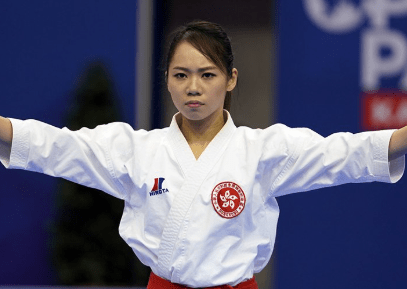
The Japanese military had a significant influence on the development of modern karate. After the Russo-Japanese War, the military began to look for ways to improve the physical and mental discipline of its soldiers. They were impressed by the effectiveness of karate and began to incorporate it into their training. This influence led to the formalization of the art and its adoption by the Japanese military. This is a crucial fact on our list of Top 10 Karate Facts.
The military’s influence on karate led to a more linear and powerful style, as it was more suited for combat training. The military’s emphasis on discipline and structure also helped to formalize the art and its training methods. This influence is a key part of the art’s history, and a vital entry among the Top 10 Karate Facts. The military’s role in its spread is a defining element of the Top 10 Karate Facts.
| Stat | By the 1930s, karate was officially recognized as a military training discipline in Japan, cementing its place as a national martial art. |
1. The Olympics as a Modern Milestone
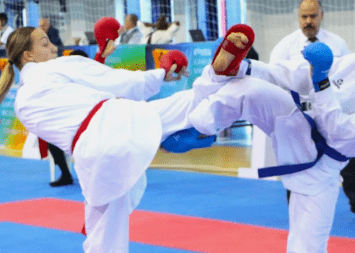
The inclusion of karate in the Olympic Games is a major milestone in its history. It was a goal that had been sought for decades, and its inclusion in the 2020 Tokyo Games was a dream come true for many practitioners. The Olympics brought the art to a global audience and solidified its place as a major sport. The Olympic inclusion is a key fact on our list of Top 10 Karate Facts.
The Olympics helped to legitimize karate as a modern sport and brought it to a new generation of fans. It also helped to standardize the rules of competition and to formalize the art’s training methods. The Olympics as a modern milestone is a crucial entry among the Top 10 Karate Facts. The Olympic inclusion is the final entry on our list of the Top 10 Karate Facts.
| Stat | Karate was featured in the 2020 Tokyo Olympic Games, marking its debut as an official Olympic sport. |
FAQs :
Q1: Was karate created in Japan or Okinawa?
A1: Karate was created in Okinawa, which was an independent kingdom at the time, and was later introduced to mainland Japan, a key fact on our list of Top 10 Karate Facts.
Q2: Why did Gichin Funakoshi change the name of karate?
A2: Gichin Funakoshi changed the name of karate from “China Hand” to “Empty Hand” to emphasize the art’s spiritual and intellectual dimensions, a key fact on our list of Top 10 Karate Facts.
Q3: What is the significance of the weapons ban?
A3: The weapons ban forced the Okinawan people to develop an effective, unarmed fighting system, which is a major factor in the evolution of modern karate, a crucial fact on our list of Top 10 Karate Facts.
Read More:

